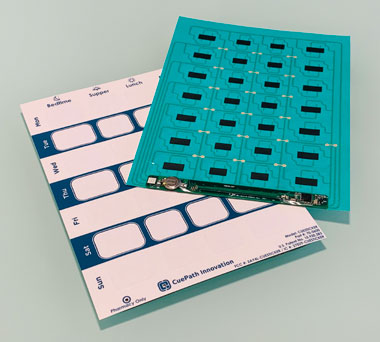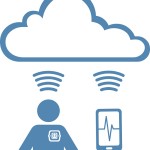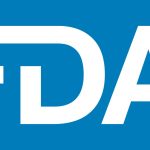A variety of medication adherence tools have been adopted over the years to try and reduce the percentage of people with long-term conditions who aren’t taking medications as their doctors have prescribed. Particular attention has been directed at the use of “smart” medication blister packs connected to the Internet of Medical Things (IoMT). Once in use at the patient’s home and connected to the cloud, these smart blister packs enable healthcare professionals to know when doses are removed and intervene when they are not. As these connected real-time monitoring solutions grow in adoption, the latest technological advances are focused on not only improving medication adherence but also ensuring that patients who use this approach are protected from today’s increasingly dangerous cybersecurity threats.
A Hidden Drug Crisis
The New England Journal of Medicine reported that 69% of medication-related hospital admissions every year are a result of poor medication adherence.[i] The World Health Organization has estimated that the problem costs over $100 billion annually while contributing to the deaths of approximately 125,000 people each year[ii]. When this number is compared to that of, say, heart disease and stroke (at $216 billion) and cancer (at $240 billion)[iii] it is no wonder that medication adherence has become a major focus of the healthcare industry. As former U.S. Surgeon General C. Everett Coop said, “Drugs don’t work in patients who don’t take them.”
Skipping doses or failing to take them at the prescribed times reduces and can even completely negate their effectiveness. For some medications, not taking them at the correct intervals may even exacerbate the diseases they are meant to combat. A physician might mistakenly increase a medication dosage due to low effectiveness, not realizing that it had not been taken correctly. Some patients combine doses into one mega-dose which can have devastating consequences, sending the patient from a state of under-medication to extreme over-medication. Nonadherence can also result in falls, dizziness, fatigue, nausea and other detrimental conditions.
The healthcare industry has employed many strategies over the years to improve medication adherence so that patients can more effectively manage their dosing, stay healthier and independent for longer, and prevent mediation-related emergencies. Among the earliest measures was the use of traditional pillboxes and blister packs to help patients organize their medication regimens. Also useful have been interventions, such as team-based or coordinated care, and providing various types of educational information as well as daily reminders.
Today’s connected pill packs for remotely monitoring adherence take these concepts into the digital realm as part of a cloud-based Medication Adherence as a Service (MAaaS) offering. These MAaaS offerings include services for monitoring dose delivery data and alerting the patient or family members when there is a change of condition so the problem can be resolved.
How MAaaS Works
Today’s MAaaS offerings give the traditional medication bubble packs new capabilities for resolving medication nonadherence and improving patient quality of life. MAaaS providers work with home care and home health agencies as well as pharmacies to deliver this capability using special multi-compartment medication packaging that contains embedded communication sensors capable of communicating with the cloud.
The process begins with the pharmacist, who dispenses the medications in these sensor-based, smart blister packs and then delivers the packs to patients’ homes. As the patient opens each individual bubble compartment, a sensor records the associated data and time, which is then made available to the MAaaS provider’s adherence support team. The team knows the patient’s prescription schedule and whether the medication has been taken on time, or late, or has been missed altogether. The team also knows when an incorrect compartment has been opened.
The support team then works with home care and home health agencies to respond to nonadherence events and to identify patterns of nonadherence over time. This generally includes developing trust with the patient, probing for the underlying causes that impede adherence and facilitating the appropriate support elements to improve adherence.
Securing MAaaS While Protecting Patient Data
MAaaS solutions face the same threats as any connected medical device, including heart defibrillators, insulin pumps, Continuous Glucose Monitors (CGMs) and other devices that are at risk of being wirelessly hijacked and reprogrammed. Hackers attack these systems by attempting to gain short-range access to their wireless connection. They can then, for instance, direct a CGM to report an inaccurate blood glucose reading or, in the case of a pacemaker, disrupt a patients’ heart rhythms.
To protect MAaaS solutions against these threats, a multi-layered security strategy is used that combines trusted connectivity with secure and “always available” network coverage. This gives patients and their families the confidence that medication dosing information is being shared remotely only with trusted entities, any nonadherence intervention comes only from a similarly trusted entity, at the right time. Achieving these capabilities requires a complete end-to-end “security by design” solution based on what is called a distributed and guaranteed “root of trust”—i.e., there has been a process of authorizing who can use the system and ensuring that only these people are accessing it.
Trust must extend across all system users as well as all system devices. Each must be authenticated. This includes the MAaaS in-home gateway device connected to the adherence support team. This gateway serves as the data hub and means of communicating with the patient. Authentication is also required for all sensors that are harvesting data about each dosing event, as well as the cloud to which sensors are sending this data.
In general, authentication validates the integrity of all users, the smart blister packs, the gateway and the cloud, as well as any other devices that might be connected to the solution’s communication system in the future. This might eventually include devices such as smartphones, which would give family members greater access to their loved one’s adherence status and associated data. Having an authentication layer of security technology in the MAaaS offering ensures that any dosage reminders and instructions coming to the patient through the gateway from the support team are genuine, and also prevents the introduction of any counterfeit elements, such as fraudulent medication packages, into the system.
The second area of concern is communications between the gateway and the cloud. The channel must be secure and always available. Many mistakenly believe that today’s modern and widely adopted connectivity solutions automatically include this level of security. They do not. A gateway such as that used in a MAaaS solution typically features a Bluetooth link which, like other common wireless and wired communications protocols, mitigates some, but not all, threats. Additional measures are required to fully protect the communications channel between the MAaaS gateway and the cloud from malware and wireless channel cybersecurity attacks. MAaaS providers also must employ the right kind of communications gateway so there is a constant supply of adherence data.
These types of authentication and connectivity solutions have already been proven successful in today’s IoMT. As an example, hospitals use these solutions to defend against counterfeits and improper use of legitimate medical equipment and consumables, such as x-ray plates that must be employed only with a specific imaging system for a specified patient. Another example is tubeless automated insulin delivery (AID) systems with compatible smartphone control that are integrated with continuous glucose monitor (CGM) systems to help protect against insulin highs and lows. The extent to which the families of diabetes patients are clamoring for the ability to use their smartphones with these systems is just one example of accelerating demand for the convenience of being able to securely and reliably accessing patient data and using healthcare applications in the cloud with one’s own smartphones.
With multi-layered security in place, today’s MAaaS solutions provide safe and reliable, 24/7 medication adherence monitoring and intervention support. This security model also provides the foundation for future innovations, such as adding smartphone access and control to the MAaaS ecosystem, and expanding the use of in-home gateways to include secure video well checks and other remote interactions between patients and their support team members, pharmacists or healthcare providers.
[i] Osterberg, Blascke, Adherence to Medication, Aug 4, 2005
[ii] Pankaj Pal, Sharda Sambhakar, Vivek Dave, Shailendra Kumar Paliwal, Sarvesh Paliwal, Monika Sharma, Aadesh Kumar, Nidhi Dhama, “A review on emerging smart technological innovations in healthcare sector for increasing patient’s medication adherence,” Global Health Journal, December 2021.
[iii] National Center for Chronic Disease Prevention and Health Promotion (NCCCDPHP), “Health and Economic Costs of Chronic Diseases,” Centers for Disease Control and Prevention (CDC) website.







